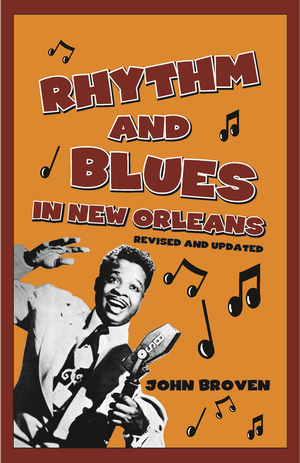Home » Jazz Articles » Book Review » Rhythm and Blues in New Orleans, 3rd Edition
Rhythm and Blues in New Orleans, 3rd Edition
 Rhythm and Blues in New Orleans, 3rd Edition
Rhythm and Blues in New Orleans, 3rd Edition John Broven
360 Pages
ISBN: # 978-1455619511
Pelican Publishing Company, Inc.
2016
Where Julian C. Piper's Blues From The Bayou: The Rhythms Of Baton Rouge (Pelican Publishing, 2018) represents a history told vertically, drilling deep into a small slice of time and expanding out, John Broven's punctilious treatment of New Orleans R&B, Rhythm and Blues in New Orleans, completely revised and it its third edition, is an horizontal and panoramic view of that music's development between the 1940s through today. The first edition was originally entitled, Walking to New Orleans: The Story of New Orleans R&B when published by Blues Unlimited Books in 1974. A revised second edition was published in 1978, and now this present revised third edition dropped in 2016.
Broven's is a thorough account of what Jerry Wexler anointed "Rhythm & Blues" the cloaked language that replaced the repugnant term "Race Records" as that flavor of music was practiced in New Orleans. At once, there are too many names and recordings to adequately mention, and there really is only one name. Producer and recording engineer Cosimo Matassa (1926-2014) looms so large in the history of music in New Orleans that Broven can scarcely move beyond that particular orbit. The story starts nominally with Roy Brown's 1947 "Good Rockin' Tonight" (10 years before Elvis Presley) and ends after an appendicle section addressing NOLA R&B from the late 1970s through the year of publication of the third edition. In between the two, Broven's research was rich and dense and his expression of the results are accessible and informative. For those of a certain age, the typeface is just a tad too small. The story told is not small at all.
< Previous
Sligo Jazz Project 2018: Days 1-2
Next >
Novara Jazz 2018
Comments
Tags
For the Love of Jazz
 All About Jazz has been a pillar of jazz since 1995, championing it as an art form and, more importantly, supporting the musicians who create it. Our enduring commitment has made "AAJ" one of the most culturally important websites of its kind, read by hundreds of thousands of fans, musicians and industry figures every month.
All About Jazz has been a pillar of jazz since 1995, championing it as an art form and, more importantly, supporting the musicians who create it. Our enduring commitment has made "AAJ" one of the most culturally important websites of its kind, read by hundreds of thousands of fans, musicians and industry figures every month.























